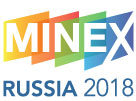- Home
- Mike Stewart

Mike Stewart
Technical Domain Expert - Mining & Minerals
Seequent
Speaker profile
Mike is a geologist and geostatistician with 20+ years experience in the mining industry. He has specific expertise in resource estimation, resource classification, sampling and quality control issues. Mike holds B.Sc. and M.Sc. (Hons) degrees in geology from the University of Canterbury. He also has post-graduate qualifications in geostatistics (CFSG) from the Paris School of Mines (Fontainebleau). He is a member of the AIG and the AusIMM.
Mike has worked at senior technical levels in a number of mining companies, and has 10 years consulting experience in the specialist application of geology, geostatistics and common sense to resource estimation. During this time he developed and taught numerous short courses for industry personnel. In his current role he provides technical input to design and implementation of cutting-edge software solutions for the mining industry.
Presentation summary
The Next Step In Geological Data Management
In the mining and exploration sectors, geological data underpins most critical business decisions and ultimately forms the basis on which companies are valued. But the data that backs these decisions is poorly managed, adding risk and leading to significant inefficiencies. Almost universally, high standards are applied to the safe and secure storage of drilling data in relational databases. While primary data clearly has potential value, the real value in data comes from interpretation and modelling. In contrast to raw data, the storage, security and temporal management of this value-added information almost universally remains ad hoc. In most cases the formats of data are tied to modelling software, and data security and version control are dependent on manual processes with wide variations in practice. Modelling processes and outputs are often critically dependent on the stewardship of individuals, and knowledge loss due to staff turnover is common. Data modelling technology is developing rapidly. There is a growing necessity to safely transfer data between packages. Current practices for management, storage and handling of modelled outputs are causing a bottleneck and limiting users’ ability to take advantage of these technological developments. This paper outlines some of the characteristics that software must have to address the challenges of geological information management once the real and tangible value is added to the raw data.
